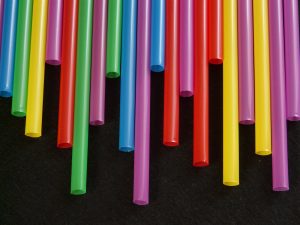Polyvinyl chloride, abbreviated as PVC in English, is a polymer polymerized by vinyl chloride monomer in the presence of peroxide, azo compound and other initiators or under the action of light and heat according to the free radical polymerization mechanism. Vinyl chloride homopolymer and vinyl chloride copolymer are collectively referred to as vinyl chloride resin.

PVC is a white powder with amorphous structure, and its degree of branching is small. Its glass transition temperature is 77~90 ℃, and it starts to decompose at about 170 ℃. It has poor stability to light and heat. When it is above 100 ℃ or exposed to sunlight for a long time, it will decompose to produce hydrogen chloride, which will further automatically catalyze decomposition, causing discoloration, and its physical and mechanical properties will also decline rapidly. In practical applications, stabilizers must be added to improve the stability to heat and light.
The molecular weight of PVC produced in industry is generally in the range of 50000~110000, which has great polydispersity. The molecular weight increases with the decrease of polymerization temperature, without fixed melting point. It begins to soften at 80~85 ℃, becomes viscoelastic at 130 ℃, and becomes viscous fluid at 160~180 ℃; It has good mechanical properties, tensile strength of about 60MPa, and impact strength of 5-10kJ/m2; It has excellent dielectric properties.
PVC used to be the most common plastic in the world, and it was widely used. It is widely used in building materials, industrial products, daily necessities, floor leather, floor tiles, artificial leather, pipes, wires and cables, packaging films, bottles, foaming materials, sealing materials, fibers, etc.
According to the different scope of application, PVC can be divided into: general-purpose PVC resin, high degree of polymerization PVC resin, cross-linked PVC resin. Universal PVC resin is formed by polymerization of vinyl chloride monomer under the action of initiator; PVC resin with high degree of polymerization refers to the resin polymerized by adding chain growth agent in vinyl chloride monomer polymerization system; Crosslinked PVC resin is polymerized by adding a crosslinking agent containing dienes and polyenes in the vinyl chloride monomer polymerization system.
According to the method of obtaining vinyl chloride monomer, it can be divided into calcium carbide method, ethylene method and imported (EDC, VCM) monomer method (ethylene method and imported monomer method are commonly referred to as ethylene method).
According to polymerization methods, PVC can be divided into four categories: suspension PVC, lotion PVC, bulk PVC and solution PVC. Suspension PVC is the largest variety, accounting for about 80% of the total output of PVC. Suspension PVC is divided into six types according to the absolute viscosity: XS-1, XS-2… XS-6; XJ-1、XJ-2……、XJ-6。 The meaning of each letter in the model: X-suspension method; S-loose type; J-Tight type.
According to the amount of plasticizer content, PVC plastic olefin plastics are often divided into: non plasticized PVC, plasticizer content is 0; Rigid PVC with plasticizer content less than 10%; Semi rigid PVC with plasticizer content of 10-30%; Soft PVC with plasticizer content of 30-70%; The content of plasticizer in PVC paste plastic is more than 80%.
Preparation method
Polyvinyl chloride can be made by substitution reaction of ethylene, chlorine and catalyst. Because of its fire and heat resistance, PVC is widely used in various products in all walks of life: wire sheaths, optical fiber sheaths, shoes, handbags, bags, ornaments, signboards and billboards, building decoration products, furniture, hanging decorations, rollers, pipes, toys, door curtains, rolling doors, auxiliary medical supplies, gloves, some food fresh-keeping paper etc.
